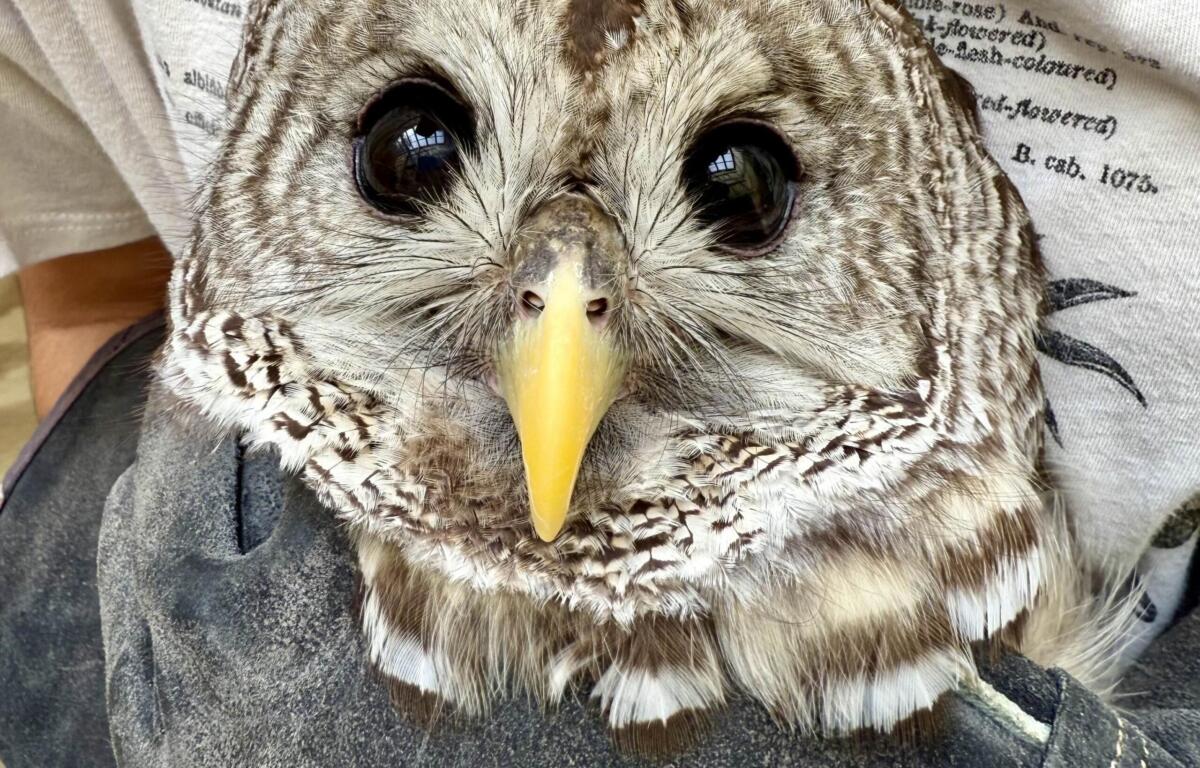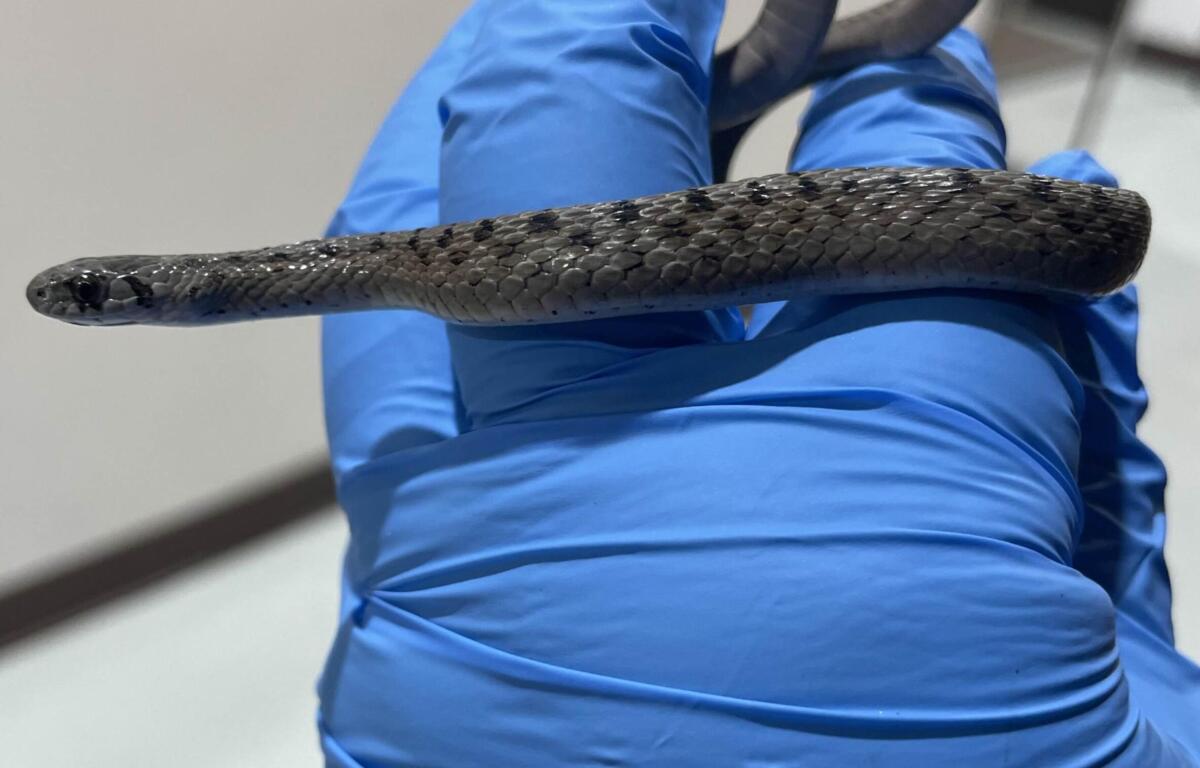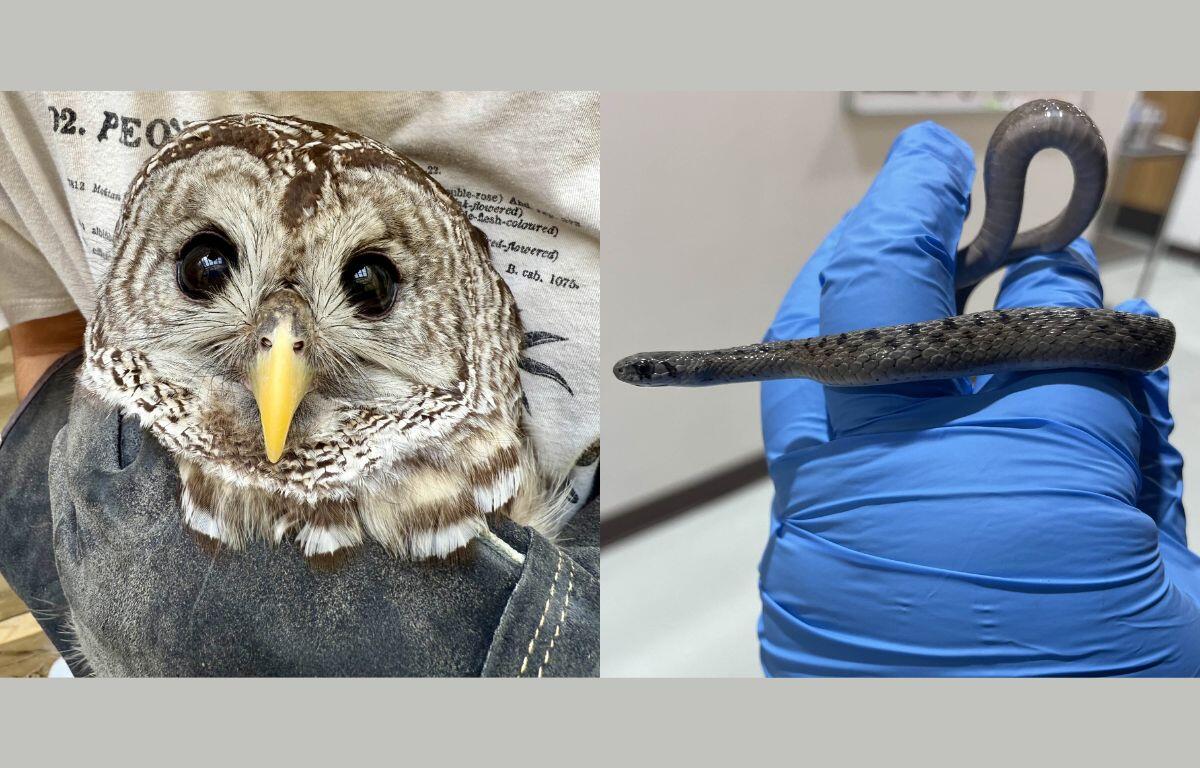WAYNESBORO, VA (Rocktown Now) — This Halloween season, the Wildlife Center is caring for nearly 100 patients — and some of them might look right at home among Halloween decorations: owls, crows, and snakes. These animals, often featured in spooky stories and seasonal décor, are part of the Center’s everyday caseload. Though they may be viewed as “spooky” to some, these species play essential roles in Virginia’s ecosystems and often find themselves in need of care after becoming injured.

Owls
Owls have long been linked with Halloween, their haunting calls and nocturnal habits lending them an air of mystery. In folklore, they’ve been seen as messengers from the spirit world or omens of death — but around the Wildlife Center, they’re simply familiar patients.
As nights get longer during the fall, owl admissions typically increase at the Center. Many are struck by vehicles while hunting along roadways. Right now, the Center is treating 11 owls: two Barred Owls, seven Eastern Screech-owls, and two Great Horned Owls. Nearly all were victims of vehicle collisions. One Great Horned Owl, however, came to the Center under different circumstances — it was rescued in Goochland County after becoming tangled in fishing line high in a tree.
Crows & Ravens
Few birds are as steeped in folklore as crows and ravens. From their role in myth and legend to Edgar Allan Poe’s famous poem, these birds are often cast as symbols of mystery and mischief. In reality, they’re some of the most intelligent and social animals the Center cares for.
This fall, two American Crows are in treatment, both admitted as fledglings earlier this spring. Now fully grown, they’re spending their days in an outdoor flight pen, practicing their flight and developing the skills they’ll need for release. The rehabilitation staff describe them as curious and clever, quick to investigate enrichment items and interact with one another throughout the day.

Snakes
Of all the Center’s “spooky” patients, snakes might be the most misunderstood. Though often feared or vilified in stories, most snakes are harmless and play a vital role in keeping rodent populations in check. In truth, snakes prefer to retreat long before they would ever confront a human; as herpetologist Clifford H. Pope once wrote, “Snakes are first cowards, then bluffers, and last of all warriors.”
Five snakes are currently receiving care at the Center — four Central Ratsnakes and one Common Gartersnake. The Gartersnake arrived just this week after being caught by a cat in Waynesboro, a reminder of how domestic pets can unintentionally harm wildlife.
Helping Wildlife This Halloween
While their reputations may lean toward spooky, owls, crows, and snakes are simply wild neighbors that sometimes need a helping hand. You can help keep them and other wildlife safe this Halloween by taking a few simple precautions:
- Avoid certain outdoor decorations that may entangle wildlife. Items like fake cobwebs, string lights, and tinsel can easily entangle birds and small mammals.
- Keep candy and wrappers indoors. Wildlife may be attracted to the smell of sweets, which can cause illness if ingested.
- Drive carefully at night. Many animals are most active at dusk—especially deer, owls, raccoons, and opossums—so watch the roads closely on the way to and from trick-or-treating.
- Keep pets supervised. Cats and dogs roaming outdoors can harm or stress wild animals, and can also be at risk themselves during Halloween festivities
This Halloween, a little extra care can make a big difference for the wild creatures who share our neighborhoods!




